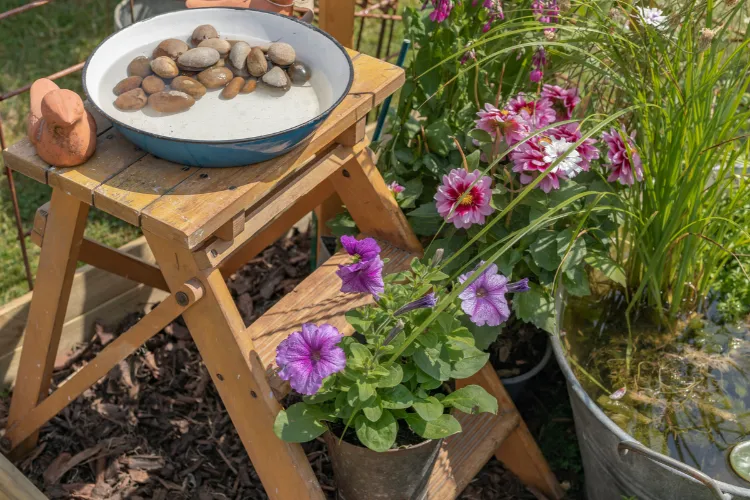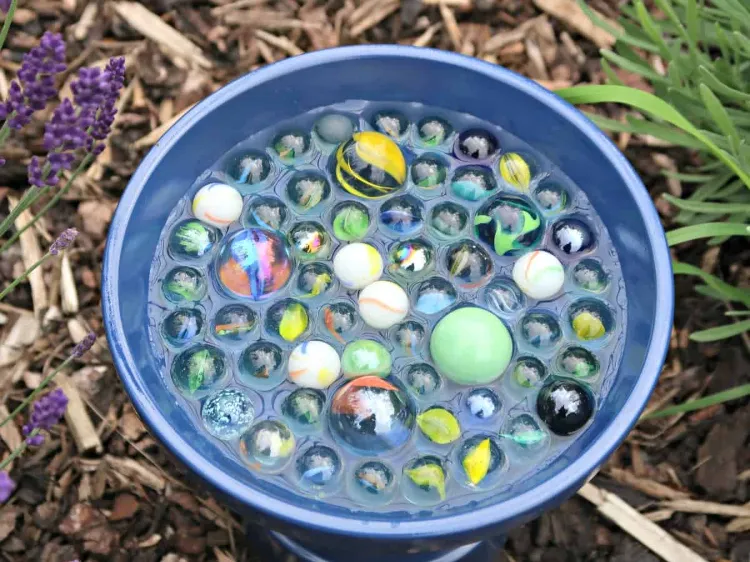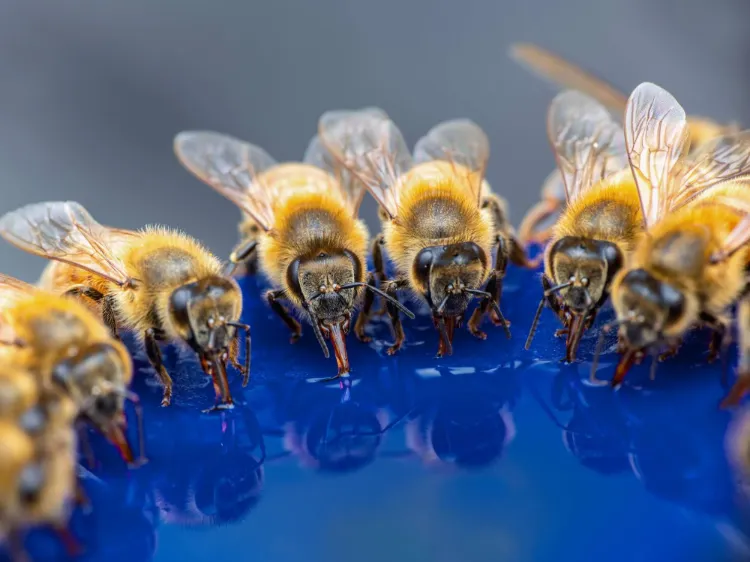No harvest without bees – everyone knows how important bees are for the environment. They ensure a rich harvest, take over a large part of the pollination of our plants and contribute to their propagation. Unfortunately, the useful helpers and especially the honey bee and the wild bee are increasingly threatened and bee deaths will have serious consequences. A bee-friendly garden is much more than just a trend – we are doing something good for the environment and creating a habitat and food supply for the small insects. Since bees need water like everyone else, a bee waterer in the garden would be very useful. Building a bee waterer like this is a lot easier than you think and looks decorative. In today’s article we will explain how to create a small water paradise for the busy bees.
Just like humans and other animals, bees need water in addition to pollen and food. The little protégés are thirsty, especially in spring and in the summer heat, as well as in densely populated areas in the city, but often do not get enough water. They cover a large part of their water requirements through the collected nectar and the morning dew drops are also used for the water supply. However, bees do not only need water to feed their brood and quench their thirst. They also cool the beehive on very hot days. With a beer trough in the garden, you make sure that the beneficial insects meet their water needs.
Build your own bee waterer: It’s that easy

Building a bee waterer in the garden yourself is actually not that complicated. The most important thing is that it is weatherproof and made of natural materials whenever possible. Bees reach the water particularly well in flat bowls or plates – otherwise they can drown quickly. To prevent this, place small twigs as a swimming aid for the insects. Alternatively, you can also fill the bowl with some expanded clay and moss. A small mixture of small and large pebbles and stones is just as suitable for the bee watering place and is also very easy to care for. Pond plants such as water lilies are also great helpers and look really nice. However, keep in mind that cork and wood will become waterlogged over time and should be replaced regularly.
Where to put the bee waterer in the garden?

In order to help the little protégés, it is also important where we set up the bee waterer in the garden. Since bees do not like cold water, a warm place in the sun is considered optimal. Also make sure that the place is protected from precipitation and wind. If possible, position the bee waterer near bee-friendly plants – this gives the insects a chance to feed while quenching their thirst. If you have your own beehive in the garden, it is advisable to place the bee waterer at least 40 meters away.
Use the right water

Yes, the water used is also of great importance for the bee waterer in the garden. The first thing to watch out for is that this one isn’t too cold. Tap water is not a suitable choice for the leg waterer – it is far better to use water from a garden pond or if possible – from a nearby lake or stream. Rainwater would also be a suitable alternative, but spoils much faster and should therefore be replaced daily. If you still have to use tap water for one reason or another, let it sit at room temperature for 2 to 3 days beforehand. And if you have a pool in your garden, consider yourself lucky because bees also like to drink chlorinated water. So you can easily fill the bee waterer in the water with chlorine water from the pool.
How do bees draw attention to the watering hole?

Of course, in order for the bees to help themselves to the bee waterer in the garden, they have to know that it is there at all. It can sometimes take a while before the protégés discover the new water source and dare to try it. Fortunately, there is a very simple trick you can use to make the bees aware of the bee waterer. A few drops of anise essential oil are perfect for luring the little insects to the watering hole. Essential anise oil can now be found in almost every drugstore or pharmacy. Never fill the bee waterer with honey or sugar water, as this often attracts bees from another apiary and the insects start fighting or stinging each other. And we don’t want that, do we?
